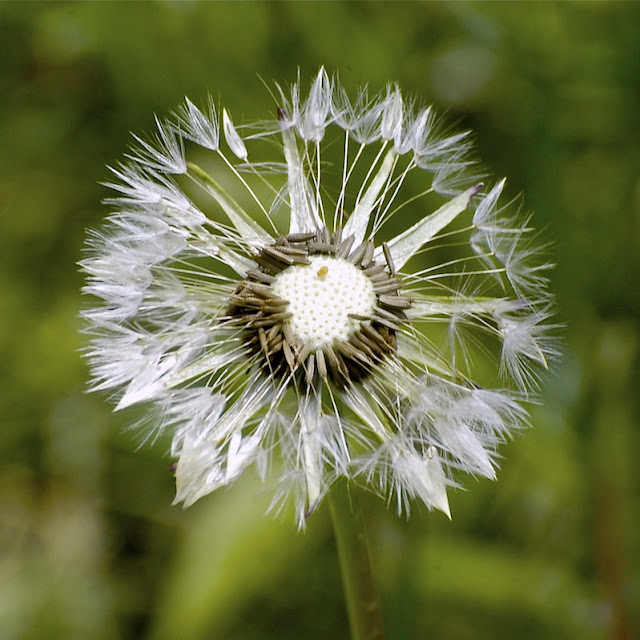A few days ago I made this photo of a small hover fly working a trio of Common Fleabane blooms. Some folks call hover flies "flower flies" or "syrphid flies." You often see them poised around blooms, where they feed on the flower's nectar or pollen. Hover flies are considered beneficial insects, since they're fairly important pollinators, and because the larvae of some species feeds on aphids and thrips, thus protecting plants from such pests' juice-sucking destruction. While the hover fly may resemble a bee in coloration, it is perfectly harmless.
A day or so after I made this image, the fleabane began to wilt. Now the plant is down on the ground—soon to disappear until next spring. In its place will come Daisy Fleabane and Whitetop, and then the asters.
The beat goes on—with insects and flowers, birds and mammals, even incorrigible ol' riverbank-dwelling scribes of maturing vintage. I had my pacemaker's two-week post-implant checkup today, and everything is going fine. I continue to feel better, with each new day bringing an additional degree of improvement. Fact is, I already feel the best I have in years, for which I'm pleased—and thankful—beyond words. My next checkup is in six months.
So that's the promised update.
I'll close with a bit of info I found astonishing, even amusing in a flabbergasted "I can't believe anyone would be that crazy!" sort of way. From Helping Your Heart: A Patient's Guide to Understanding Cardiac Pulse Generators, a little booklet which came with the packet I received from the pacemaker's manufacturer at discharged from the hospital. Under "Coming Home After Surgery," a list of dos and don'ts, there's this incredible gem: Do not play with or move the pulse generator under the skin.
My Lord! Really? People need to be told this? There are really folks who fiddle with the device that's implanted under their hide, wired into their heart, and probably keeping them alive? Are you kidding? So I asked my doctor. Yup, they're out there…and not as uncommon as, say, a Kirtland's Warbler.
Go figure.
————————

























